The list below offers an overview of HURI's archival and manuscript collections. If you're looking for something particular, use the Search box with keywords to identify useful collections.
For annotated descriptions of all the Ukrainian archival collections at Harvard University libraries consult A Guide to Ukrainian Special Collections at Harvard University prepared by Ksenya Kiebuzinksi. Bibliographic records for all archival collections could be found in HOLLIS. Finding aids and digital images of selected archival collections could be found in HOLLIS for Archival Discovery.
 Oleksii Alchevskyi (1835-1901) owned the Kharkiv Southern Russia Commercial Bank and financed a number of coal-mining and metallurgical firms in the Donbas. His wife Khrystyna (1841-1920) was a pedagogue and educator of adults. The papers include two documents: 1) an act dated May 29, 1902, confirming the sale of the Alchevskyi family property in Kharkiv to N.P. Shabelskii; 2) an act dated May 30, 1902, regarding the preservation of the commemorative bust of Taras Shevchenko sculpted by Vladimir Beklemishev for the Alchevskyi family in Kharkiv.
Oleksii Alchevskyi (1835-1901) owned the Kharkiv Southern Russia Commercial Bank and financed a number of coal-mining and metallurgical firms in the Donbas. His wife Khrystyna (1841-1920) was a pedagogue and educator of adults. The papers include two documents: 1) an act dated May 29, 1902, confirming the sale of the Alchevskyi family property in Kharkiv to N.P. Shabelskii; 2) an act dated May 30, 1902, regarding the preservation of the commemorative bust of Taras Shevchenko sculpted by Vladimir Beklemishev for the Alchevskyi family in Kharkiv.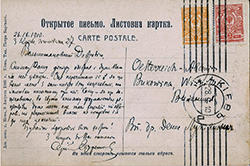 This autograph collection consists of letters and postcards written by Ukrainian scholars and cultural figures, including Serhii Iefremov, Nataliia Kobryns’ka, Bohdan Lepkyi, and stepan Smal-Stockyj, among others. Much of the material appears to have been collected by Denys Luk’ianovych.
This autograph collection consists of letters and postcards written by Ukrainian scholars and cultural figures, including Serhii Iefremov, Nataliia Kobryns’ka, Bohdan Lepkyi, and stepan Smal-Stockyj, among others. Much of the material appears to have been collected by Denys Luk’ianovych.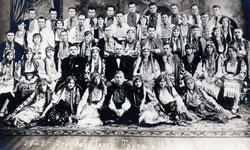 Mykhailo Bazhanskyi (1910-1994) was a journalist, editor and writer, a prominent leader in the Ukrainian community of the United States, where he immigrated after the Second World War. Throughout his life he served on various editorial boards, published several journals and books, and contributed numerous articles to Ukrainian periodicals devoted to the study of literature, culture, and scouting. The papers include correspondence, manuscripts, typescripts, clippings, and other material related to his publication activities. In addition, there are fliers, brochures, and newsletters from the various Ukrainian organizations with which he was involved. Much of the material relates to Plast, the Ukrainian community in Detroit, and to his involvement with the Harvard Ukrainian Research Institute.
Mykhailo Bazhanskyi (1910-1994) was a journalist, editor and writer, a prominent leader in the Ukrainian community of the United States, where he immigrated after the Second World War. Throughout his life he served on various editorial boards, published several journals and books, and contributed numerous articles to Ukrainian periodicals devoted to the study of literature, culture, and scouting. The papers include correspondence, manuscripts, typescripts, clippings, and other material related to his publication activities. In addition, there are fliers, brochures, and newsletters from the various Ukrainian organizations with which he was involved. Much of the material relates to Plast, the Ukrainian community in Detroit, and to his involvement with the Harvard Ukrainian Research Institute.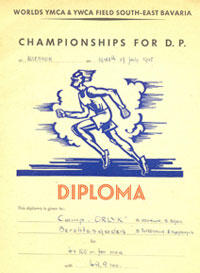 Following the Second World War, Ukrainian refugees numbering about 200,000 were interned in Displaced persons camps in West Germany and Austria. Berchtesgaden (Orlyk) was one of the larger Ukrainian DP camps in the American zone with over 2,000 refugees settled there in the late 1940s. The Berchtesgaden (Orlyk) DP camp operated a gymnasium, and sponsored political, youth, student, sport, musical and theater groups and organizations. The collection consists primarily of correspondence, minutes, financial records, diplomas, and membership lists of the camp's sports club. In addition there are some documents relating to the camp's Ukrainian gymnasium and its branch of the scouting organization Plast. The collection also includes circulars, reports, and other communications received from the Ukrainian Sports Club "Orlyk", a member of the Ukrainian Council for Physical Culture, and the Ukrainian Sports Club "Zaporizhzhia" in the Aschaffenburg DP camp.
Following the Second World War, Ukrainian refugees numbering about 200,000 were interned in Displaced persons camps in West Germany and Austria. Berchtesgaden (Orlyk) was one of the larger Ukrainian DP camps in the American zone with over 2,000 refugees settled there in the late 1940s. The Berchtesgaden (Orlyk) DP camp operated a gymnasium, and sponsored political, youth, student, sport, musical and theater groups and organizations. The collection consists primarily of correspondence, minutes, financial records, diplomas, and membership lists of the camp's sports club. In addition there are some documents relating to the camp's Ukrainian gymnasium and its branch of the scouting organization Plast. The collection also includes circulars, reports, and other communications received from the Ukrainian Sports Club "Orlyk", a member of the Ukrainian Council for Physical Culture, and the Ukrainian Sports Club "Zaporizhzhia" in the Aschaffenburg DP camp. Ihor Bilohrud, born in Romny, Ukraine, was a Ukrainian composer who spent the majority of his life composing, playing, and teaching music in the United States. In Ukraine, Bilohrud studied music at the Kiev Conservatory of Music. During the Second World War, Bilohrud and his family left Ukraine for Mannheim, Germany, where they lived in a displaced persons’ camp. He studied advanced composition at the Mannheim Conservatory, and moved to Chicago, Illinois in 1949. In November of 2013, at the 100th anniversary celebration of the Kiev Conservatory, Bilohrud was recognized for his work in building a foundation for the development of Ukrainian music in North America. The papers contain biographical materials, correspondence, musical works, concert programs, newspaper clippings, and photographs.
Ihor Bilohrud, born in Romny, Ukraine, was a Ukrainian composer who spent the majority of his life composing, playing, and teaching music in the United States. In Ukraine, Bilohrud studied music at the Kiev Conservatory of Music. During the Second World War, Bilohrud and his family left Ukraine for Mannheim, Germany, where they lived in a displaced persons’ camp. He studied advanced composition at the Mannheim Conservatory, and moved to Chicago, Illinois in 1949. In November of 2013, at the 100th anniversary celebration of the Kiev Conservatory, Bilohrud was recognized for his work in building a foundation for the development of Ukrainian music in North America. The papers contain biographical materials, correspondence, musical works, concert programs, newspaper clippings, and photographs.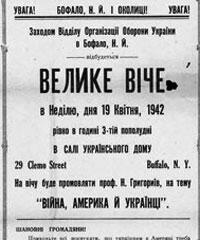 Dmytro Bratush left Ukraine in 1910 for the United States, where he settled in Rochester, New York. He actively participated in both American and Ukrainian political and social life. The papers include correspondence from Ukrainian civic, community, and political leaders, as well as some correspondence from family members. The collection primarily contains correspondence and newsletters sent to Bratush spanning the period that coincides with the inception in 1920 and dissolution in 1947 of Defense of Ukraine. Defense of Ukraine was established in the United States in the early 1920's to assist the political and military struggles for independence in Western Ukraine.
Dmytro Bratush left Ukraine in 1910 for the United States, where he settled in Rochester, New York. He actively participated in both American and Ukrainian political and social life. The papers include correspondence from Ukrainian civic, community, and political leaders, as well as some correspondence from family members. The collection primarily contains correspondence and newsletters sent to Bratush spanning the period that coincides with the inception in 1920 and dissolution in 1947 of Defense of Ukraine. Defense of Ukraine was established in the United States in the early 1920's to assist the political and military struggles for independence in Western Ukraine.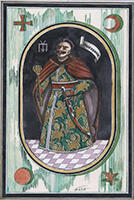 Graphic artist and illustrator, Mykola Butovych was born in the Poltava region. In the 1920s he studied in Prague, Berlin, and Leipzig. Butovych worked in Lviv, Western Europe, and, from 1947, in the United States. His work is based on themes from Ukrainian folklore and mythology. The illustrations are a series of ink and watercolor illustrations of Ukrainian Cossacks of various ranks.
Graphic artist and illustrator, Mykola Butovych was born in the Poltava region. In the 1920s he studied in Prague, Berlin, and Leipzig. Butovych worked in Lviv, Western Europe, and, from 1947, in the United States. His work is based on themes from Ukrainian folklore and mythology. The illustrations are a series of ink and watercolor illustrations of Ukrainian Cossacks of various ranks.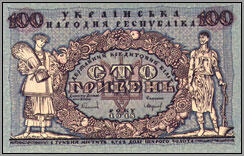 The Chuchman collection consists of paper currency issued by the government of the Ukrainian state from 1918 to 1920. The notes include state credit notes worth 10, 25, 50, 100, 250, and 1000 karbovantsi; state credit notes worth 2, 10, and 100 hryvni; and State Treasury loan bonds worth 100, 200, and 1,000 hryvni.
The Chuchman collection consists of paper currency issued by the government of the Ukrainian state from 1918 to 1920. The notes include state credit notes worth 10, 25, 50, 100, 250, and 1000 karbovantsi; state credit notes worth 2, 10, and 100 hryvni; and State Treasury loan bonds worth 100, 200, and 1,000 hryvni.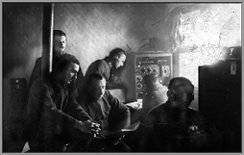 Yaroslav Ilkovych Chyz (1894-1958) served as a non-commissioned officer and lieutenant with the Austrian Army during the First World War. After the Revolution of 1917, Chyz helped organize the Sich Riflemen and in 1919 served as a political officer on the staff of its Siege Corps. In 1921 he joined the Ukrainian Military Organization formed to overthrow Polish rule over the Western Ukraine. Chyz obtained political asylum in Czechoslovakia and graduated from Charles University. After immigrating to the United States, Chyz was editor-in-chief of Narodna volya, and served as associate director of the Common Council for American Unity. In 1956 he was one of the organizers and then the executive director of the Nationalities Committee of the President's People-to-People Program. The Chyz Papers contain personal documents, publications, telegrams, and photographs. The papers provide insights into events related to the abdication of Tsar Nicholas II in early 1917. The bulk of the collection consists of telegrams that were recorded by Chyz from March 1917 to March 1918, when he was a lieutenant in the radio-intelligence corps of the Austrian Army. The rest of the collection reveals Chyz's active involvement in the press, organizations, and cultural and civic affairs of American nationality groups.
Yaroslav Ilkovych Chyz (1894-1958) served as a non-commissioned officer and lieutenant with the Austrian Army during the First World War. After the Revolution of 1917, Chyz helped organize the Sich Riflemen and in 1919 served as a political officer on the staff of its Siege Corps. In 1921 he joined the Ukrainian Military Organization formed to overthrow Polish rule over the Western Ukraine. Chyz obtained political asylum in Czechoslovakia and graduated from Charles University. After immigrating to the United States, Chyz was editor-in-chief of Narodna volya, and served as associate director of the Common Council for American Unity. In 1956 he was one of the organizers and then the executive director of the Nationalities Committee of the President's People-to-People Program. The Chyz Papers contain personal documents, publications, telegrams, and photographs. The papers provide insights into events related to the abdication of Tsar Nicholas II in early 1917. The bulk of the collection consists of telegrams that were recorded by Chyz from March 1917 to March 1918, when he was a lieutenant in the radio-intelligence corps of the Austrian Army. The rest of the collection reveals Chyz's active involvement in the press, organizations, and cultural and civic affairs of American nationality groups.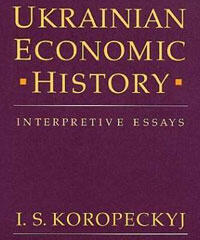 The Ukrainian Research Institute, Harvard University, and the Department of Economics, Temple University, organized a series of four conferences on the Ukrainian economy from 1975 to 1991. The first conference was devoted to an analysis of current conditions in the Ukrainian economy. The subject of the second conference was the development of economics in Ukraine. The third conference dealt with the history of the Ukrainian economy from the time of Kyivan Rus to the outbreak of World War I. The fourth conference focused on the Ukrainian economy since the early 1970s to projections of economic trends for the beginning of the twenty-first century. The records include correspondence with conference sponsors and participants, editorial correspondence regarding the publication of conference proceedings, and financial documents.
The Ukrainian Research Institute, Harvard University, and the Department of Economics, Temple University, organized a series of four conferences on the Ukrainian economy from 1975 to 1991. The first conference was devoted to an analysis of current conditions in the Ukrainian economy. The subject of the second conference was the development of economics in Ukraine. The third conference dealt with the history of the Ukrainian economy from the time of Kyivan Rus to the outbreak of World War I. The fourth conference focused on the Ukrainian economy since the early 1970s to projections of economic trends for the beginning of the twenty-first century. The records include correspondence with conference sponsors and participants, editorial correspondence regarding the publication of conference proceedings, and financial documents.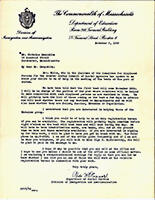 Mykola Davyskyba was a resident of Mattapan and served as the president of the Boston branch of the Ukrainian National Association. The correspondence to Davyskyba includes letters from the Ukrainian Invalids' Help Association in Lviv, Ukraine, the Ukrainian National Association, and other organizations.
Mykola Davyskyba was a resident of Mattapan and served as the president of the Boston branch of the Ukrainian National Association. The correspondence to Davyskyba includes letters from the Ukrainian Invalids' Help Association in Lviv, Ukraine, the Ukrainian National Association, and other organizations.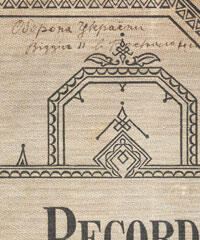 Defense of Ukraine (Oborona Ukraïny) was a Ukrainian political organization of a radical socialist profile, established in 1920 in the United States to assist the political and military struggles for independence in Western Ukraine. The association had a network of sixteen chapters, including the Buffalo branch. It was dissolved after its 1947 convention. The collection consists of one register of minutes recorded by the organization's secretaries Mykola Soroka (1925) and Stepan Detsyk (1926-1927). The minutes include information about attendance, treasurer's reports, election results, and summaries of meeting discussions.
Defense of Ukraine (Oborona Ukraïny) was a Ukrainian political organization of a radical socialist profile, established in 1920 in the United States to assist the political and military struggles for independence in Western Ukraine. The association had a network of sixteen chapters, including the Buffalo branch. It was dissolved after its 1947 convention. The collection consists of one register of minutes recorded by the organization's secretaries Mykola Soroka (1925) and Stepan Detsyk (1926-1927). The minutes include information about attendance, treasurer's reports, election results, and summaries of meeting discussions.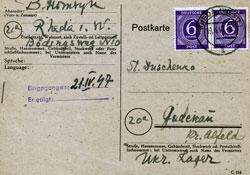 Stepan Dushenko was a contributor to Svit molodi, a supplement to Zhinocha dolia, a women's magazine published in Koloyia from 1925 to 1939. After the Second World War, Dushenko immigrated to the United States, where he contributed regularly to the Ukrainian periodicals Vilne slovo and Narodna volya. The papers contain correspondence with Ukrainian community, political, and military leaders. Several of Dushenko's correspondents were closely involved with the Ukrainian National Republic. Others were involved with Ukrainian community organizations in North America. The collection overall is a good source for the study of Ukrainian history and politics from 1917 to 1921, and post-World War II émigré life in the United States.
Stepan Dushenko was a contributor to Svit molodi, a supplement to Zhinocha dolia, a women's magazine published in Koloyia from 1925 to 1939. After the Second World War, Dushenko immigrated to the United States, where he contributed regularly to the Ukrainian periodicals Vilne slovo and Narodna volya. The papers contain correspondence with Ukrainian community, political, and military leaders. Several of Dushenko's correspondents were closely involved with the Ukrainian National Republic. Others were involved with Ukrainian community organizations in North America. The collection overall is a good source for the study of Ukrainian history and politics from 1917 to 1921, and post-World War II émigré life in the United States.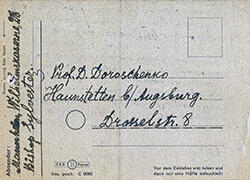 Literary scholar, educator, and church figure, Sylvestr Haievskyi served as vice-chancellor and then as director of the general department of the State Chancellery of the Ukrainian National Republic. In 1921 he was appointed professor of Kamianets-Podilskyi Ukrainian State University. He was arrested in 1922 and again in 1932. After his second release he spent several years in Central Asia. In 1942 he was consecrated bishop of Lubni Eparchy, and in 1949 he immigrated to Australia, where he served as acting bishop and archbishop of the Ukrainian Autocephalous Orthodox Church for Australia and New Zealand (1953-1962). The papers are comprised of letters written by Sylvestr Haievskyi to historian Dmytro Doroshenko. The primary focus is on the activities of the Ukrainian Autocephalous Orthodox Church among Ukrainian émigrés.
Literary scholar, educator, and church figure, Sylvestr Haievskyi served as vice-chancellor and then as director of the general department of the State Chancellery of the Ukrainian National Republic. In 1921 he was appointed professor of Kamianets-Podilskyi Ukrainian State University. He was arrested in 1922 and again in 1932. After his second release he spent several years in Central Asia. In 1942 he was consecrated bishop of Lubni Eparchy, and in 1949 he immigrated to Australia, where he served as acting bishop and archbishop of the Ukrainian Autocephalous Orthodox Church for Australia and New Zealand (1953-1962). The papers are comprised of letters written by Sylvestr Haievskyi to historian Dmytro Doroshenko. The primary focus is on the activities of the Ukrainian Autocephalous Orthodox Church among Ukrainian émigrés.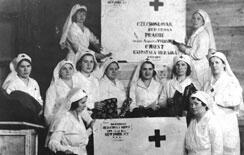 Stefania Halychyn (1913-1994) was an active organizer and leader in Ukrainian-American women's activities. The Halychyn Papers are organized into three series: organizational files (1935-1956); personal files (1913-1961); and photographs (1929-1957). The papers include mostly material from Halychyn's activities as organizer and president of the Ukrainian Gold Cross, a humanitarian relief and educational association of Ukrainian women in the United States. This material consists of circulars, correspondence, reports and speeches, as well as circular letters from the head of the Organization for the Rebirth of Ukraine (ODVU). There is additional material from her husband's, Dmytro Halychyn's, work as vice-chairman of the Ukrainian Congress Committee of America, and as secretary and president of the Ukrainian National Association. The remainder of the collection is comprised of personal documents and family correspondence.
Stefania Halychyn (1913-1994) was an active organizer and leader in Ukrainian-American women's activities. The Halychyn Papers are organized into three series: organizational files (1935-1956); personal files (1913-1961); and photographs (1929-1957). The papers include mostly material from Halychyn's activities as organizer and president of the Ukrainian Gold Cross, a humanitarian relief and educational association of Ukrainian women in the United States. This material consists of circulars, correspondence, reports and speeches, as well as circular letters from the head of the Organization for the Rebirth of Ukraine (ODVU). There is additional material from her husband's, Dmytro Halychyn's, work as vice-chairman of the Ukrainian Congress Committee of America, and as secretary and president of the Ukrainian National Association. The remainder of the collection is comprised of personal documents and family correspondence.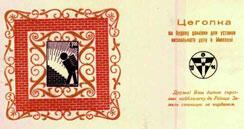 The collection primarily consists of postage stamps and paper currency issued by the government of the Ukrainian state from 1918 to 1920. The postage stamps include examples of trident overprints; Ukrainian National Republic shah issues; the Government-in-exile's Vienna issues; Western Ukrainian National Republic's overprints; the 1923 Ukrainian SSR famine relief set; and the Taras Shevchenko 150th anniversary series. The currency includes examples of state credit notes, as well as diaspora issued commemorative notes.
The collection primarily consists of postage stamps and paper currency issued by the government of the Ukrainian state from 1918 to 1920. The postage stamps include examples of trident overprints; Ukrainian National Republic shah issues; the Government-in-exile's Vienna issues; Western Ukrainian National Republic's overprints; the 1923 Ukrainian SSR famine relief set; and the Taras Shevchenko 150th anniversary series. The currency includes examples of state credit notes, as well as diaspora issued commemorative notes.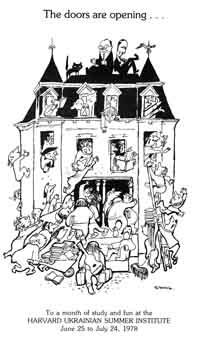 The Institute's records include course announcements, brochures, programs, press clippings, and student yearbooks. The Ukrainian Summer Institute, an eight-week intensive program in Ukrainian studies, has been a part of the Harvard Summer School curriculum since 1971. The program includes courses in Ukrainian language at the beginning, intermediate, and advanced levels. Additional courses and seminars are also offered in such fields as history, literature, culture, ethnology, religion, sociology, politics, and international affairs. These classes are complemented by an extracurricular program of special events, such as films, theater or music workshops, concerts, and guest lectures by leading scholars.
The Institute's records include course announcements, brochures, programs, press clippings, and student yearbooks. The Ukrainian Summer Institute, an eight-week intensive program in Ukrainian studies, has been a part of the Harvard Summer School curriculum since 1971. The program includes courses in Ukrainian language at the beginning, intermediate, and advanced levels. Additional courses and seminars are also offered in such fields as history, literature, culture, ethnology, religion, sociology, politics, and international affairs. These classes are complemented by an extracurricular program of special events, such as films, theater or music workshops, concerts, and guest lectures by leading scholars.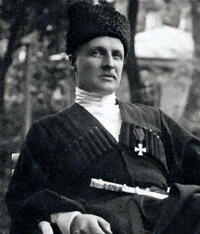 The collection comprises correspondence between leading members of the hetmanite movement who went on to establish the Ukrainian Union of Agrarians-Statists (USKhD), an émigré conservative monarchist organization founded in Vienna in 1920. These members include Pavlo Skoropadskyi, former hetman of the Ukrainian state and leader of the hetmanite movement; Oleksandr Skoropys-Ioltukhovskyi, a former member of the Hetman's government in the Kholm region and Podlachia; Volodymyr Zalozetskyi, head of the Ukrainian National party in Bukovina; Mykola Kochubei; and the organizations founder, leader, and ideologue Viacheslav Lypynskyi. Much of the correspondence relates to political disagreements between Lypynskyi and Skoropadskyi which led to the dissolution of the Ukrainian Union of Agrarians-Statists in 1930.
The collection comprises correspondence between leading members of the hetmanite movement who went on to establish the Ukrainian Union of Agrarians-Statists (USKhD), an émigré conservative monarchist organization founded in Vienna in 1920. These members include Pavlo Skoropadskyi, former hetman of the Ukrainian state and leader of the hetmanite movement; Oleksandr Skoropys-Ioltukhovskyi, a former member of the Hetman's government in the Kholm region and Podlachia; Volodymyr Zalozetskyi, head of the Ukrainian National party in Bukovina; Mykola Kochubei; and the organizations founder, leader, and ideologue Viacheslav Lypynskyi. Much of the correspondence relates to political disagreements between Lypynskyi and Skoropadskyi which led to the dissolution of the Ukrainian Union of Agrarians-Statists in 1930.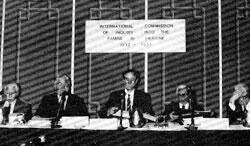 The International Commission of Inquiry into the 1932-33 Famine in Ukraine, created on February 14, 1988, deposited one complete set of recorded testimonies, submissions, and documentary exhibits used in their investigation at the Harvard Ukrainian Research Institute in September 1994. The original records are deposited at the Nobel Institute of Norway (Drammensveien 19, 0255 Oslo-2, Norway). The records of the International Commission of Inquiry contain 1,714 pages of testimonies of famine eyewitnesses and prominent international experts of Stalin's terror policy, and an additional 7, 274 pages of documentary evidence including diplomatic reports, publications, and Soviet decrees.
The International Commission of Inquiry into the 1932-33 Famine in Ukraine, created on February 14, 1988, deposited one complete set of recorded testimonies, submissions, and documentary exhibits used in their investigation at the Harvard Ukrainian Research Institute in September 1994. The original records are deposited at the Nobel Institute of Norway (Drammensveien 19, 0255 Oslo-2, Norway). The records of the International Commission of Inquiry contain 1,714 pages of testimonies of famine eyewitnesses and prominent international experts of Stalin's terror policy, and an additional 7, 274 pages of documentary evidence including diplomatic reports, publications, and Soviet decrees.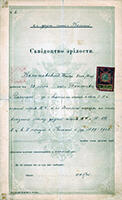 Teodor Kalytovskyi (1885-1975) was born in Horodenka, Galicia, and his wife Maria (née Demchuk, 1890-1972) in Balyntsi, Galicia . Teodor studied in Kolomyia and Chernivtsi, and taught gymnasium in Rohatyn and Kolomyia. The couple immigrated to the United States in 1950 and settled in the Detroit area. The documents include baptismal and marriage certificates, school report cards, immigration and other official papers, as well as few letters.
Teodor Kalytovskyi (1885-1975) was born in Horodenka, Galicia, and his wife Maria (née Demchuk, 1890-1972) in Balyntsi, Galicia . Teodor studied in Kolomyia and Chernivtsi, and taught gymnasium in Rohatyn and Kolomyia. The couple immigrated to the United States in 1950 and settled in the Detroit area. The documents include baptismal and marriage certificates, school report cards, immigration and other official papers, as well as few letters.